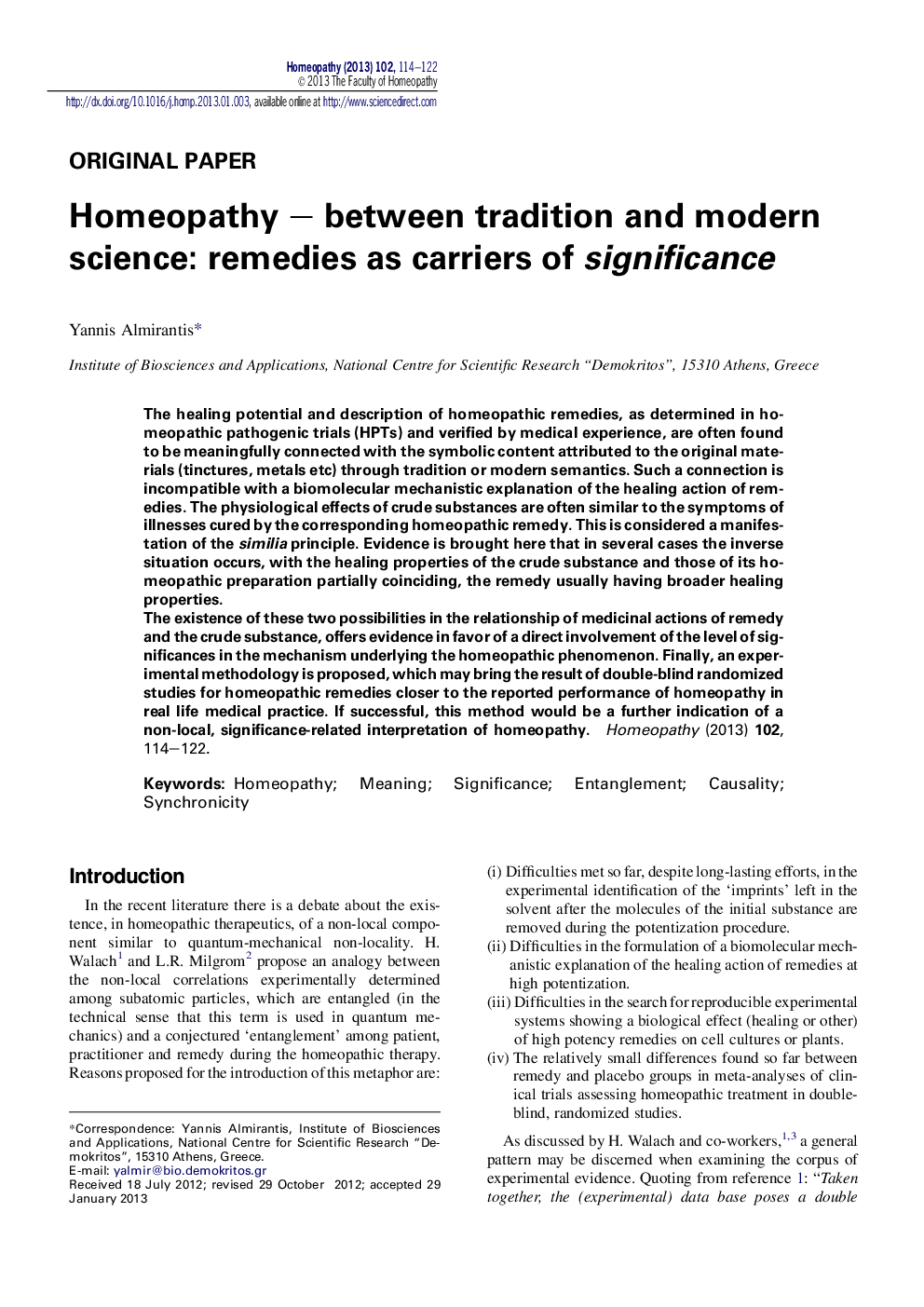| Article ID | Journal | Published Year | Pages | File Type |
|---|---|---|---|---|
| 2629992 | Homeopathy | 2013 | 9 Pages |
The healing potential and description of homeopathic remedies, as determined in homeopathic pathogenic trials (HPTs) and verified by medical experience, are often found to be meaningfully connected with the symbolic content attributed to the original materials (tinctures, metals etc) through tradition or modern semantics. Such a connection is incompatible with a biomolecular mechanistic explanation of the healing action of remedies. The physiological effects of crude substances are often similar to the symptoms of illnesses cured by the corresponding homeopathic remedy. This is considered a manifestation of the similia principle. Evidence is brought here that in several cases the inverse situation occurs, with the healing properties of the crude substance and those of its homeopathic preparation partially coinciding, the remedy usually having broader healing properties.The existence of these two possibilities in the relationship of medicinal actions of remedy and the crude substance, offers evidence in favor of a direct involvement of the level of significances in the mechanism underlying the homeopathic phenomenon. Finally, an experimental methodology is proposed, which may bring the result of double-blind randomized studies for homeopathic remedies closer to the reported performance of homeopathy in real life medical practice. If successful, this method would be a further indication of a non-local, significance-related interpretation of homeopathy.
